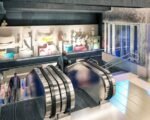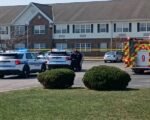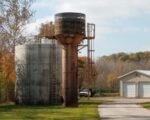Having a functional chimney is essential for a warm and safe home. A chimney helps to regulate the temperature in a home, as well as provides an adequate ventilation system to prevent the accumulation of hazardous fumes and smoke. Without regular maintenance and repair, however, a chimney can quickly become a hazard. Neglecting your chimney can lead to the buildup of creosote and soot, resulting in chimney fires and dangerous carbon monoxide poisoning. To ensure your home is safe and warm, it is important to maintain and repair your chimney regularly.
Taking the time to properly inspect and clean your chimney can help to prevent the buildup of creosote and soot, as well as detect any structural damage that may have occurred over time. Regular maintenance and repair can also help to prevent smoke and fumes from entering the home, and can even save on energy costs by ensuring your home is properly heated. By taking the necessary steps to maintain and repair your chimney, you can keep your home safe and warm for years to come.

Signs That Your Chimney Needs Maintenance and Repair
Strange smells or odors
Strange smells or odors coming from your chimney can be an indication of a problem. These odors can be caused by a buildup of creosote, which is a flammable byproduct of burning wood, or it could be a sign of animal nesting or other debris that has become lodged in the chimney flue. It’s important to have your chimney inspected by a professional to determine the source of the odor and take appropriate action.
Smoke or soot inside your home
When your chimney is not working properly, smoke or soot can be drawn into the living space of your home, causing an unpleasant odor and visibility issues. Smoke and soot can also be an indication of a blocked flue or a chimney that needs to be cleaned. If you notice smoke or soot coming into your home, it’s important to have your chimney inspected and cleaned to prevent further issues.
Damaged masonry
Over time, the masonry of your chimney can become damaged due to weather, age, and other factors. Damaged masonry can lead to water leaks and structural issues, which can be dangerous if not addressed. It’s important to have your chimney inspected regularly to ensure that no damage has occurred and to have any necessary repairs made in a timely manner.
Water leaks
Water leaks are a common issue with chimneys, as water can easily seep into the structure when there is damage to the masonry. Water leaks can cause damage to the structure of your chimney and can lead to the growth of mold and mildew, which can be harmful to your health. If you notice any signs of water leaks, it’s important to have your chimney inspected and repaired as soon as possible.
Chimney Maintenance
Regular Cleaning:
Cleaning your chimney on a regular basis is essential for proper chimney function. Debris, soot, and creosote can build up in the chimney, preventing the proper flow of hot air and gases. Regular chimney cleaning should be done once a year to maintain the life and efficiency of the chimney.
Inspection:
An annual inspection of the chimney should also be done to check for any potential damage or blockages. An inspection will also ensure the chimney is up to code and safe to use.
Repair:
If any damage or blockages are found during the inspection, repairs to the chimney should be done as soon as possible. This may include replacing bricks, mortar, and other components of the chimney.
Hiring a Professional:
It is important to hire a professional chimney sweep and inspector to ensure your chimney is properly maintained and safe to use. A professional chimney sweep and inspector will have the experience and tools needed to properly maintain your chimney.
Maintenance Checklist:
Regular chimney maintenance should include the following tasks:
1. Inspect the exterior of the chimney for any signs of damage.
2. Check the interior of the chimney for any blockages.
3. Clean the chimney of any soot, creosote, and other debris.
4. Check the flue for any signs of corrosion or damage.
5. Make sure the chimney is up to code and safe to use.
6. Replace any broken or worn components of the chimney.
7. Check the chimney cap and make sure it is securely in place.
8. Have the chimney inspected and cleaned by a professional.
Benefits of Regular Chimney Maintenance
Reduce the Risk of Chimney Fires
Regular chimney maintenance can help to reduce the risk of chimney fires. This is because, during a routine maintenance visit, any combustible debris, such as bird nests, leaves, or twigs, will be removed. Additionally, any creosote buildup, which is a highly flammable byproduct of burning wood, will be removed. By keeping your chimney clean, you can reduce the risk of a chimney fire.
Improve Indoor Air Quality
Regular chimney maintenance can also improve the indoor air quality in your home. This is because, during a routine maintenance visit, the technician will inspect and clean the chimney flue. This prevents the buildup of soot and creosote, which can reduce the air quality in your home. Additionally, the technician may inspect the chimney liner, which can further improve the air quality in your home.
Increase Energy Efficiency
Regular chimney maintenance can also help to increase the energy efficiency of your home. This is because, during a routine maintenance visit, the technician will inspect the flue, chimney liner, and other components of the chimney. This allows them to identify any gaps or cracks in the chimney that may be allowing heated air to escape from your home. By repairing any cracks or gaps, the technician can improve the energy efficiency of your home.
Save Money on Repairs
Regular chimney maintenance can also help you save money on repairs. This is because, by having your chimney inspected and maintained on a regular basis, any potential issues can be identified and addressed before they become more serious and expensive to repair. Additionally, by ensuring your chimney is properly maintained, you can reduce the need for expensive repairs in the future.
Chimney Repair
The most common chimney repair option is to replace the damaged or worn-out components. This can include fixing or replacing the chimney flue, cap, and crown. In some cases, the entire chimney will need to be completely replaced. Failing mortar joints can also be a source of chimney problems. Mortar joints are the sealant that holds the bricks together. Over time, these joints can fall apart from water damage or from the freeze-thaw cycle of the seasons. Re-pointing or tuck-pointing the joints with a new mortar will help repair these problems. Chimney relining is the process of replacing a deteriorated or damaged flue liner. A new stainless steel liner can help protect the chimney from future damage and prevent the potential for dangerous fumes to enter the home.
Common Problems with Chimney
- Cracks: Cracks in the masonry, mortar, or flue of a chimney can cause smoke to escape or rain to enter the home. Cracks can also weaken the structure of a chimney, leading to potential collapse.
- Leaks: Leaks in a chimney can occur due to damaged or missing flashing, loose cement, or corroded metal. Seeping water can cause damage to the masonry and interior of the chimney, as well as cause smoke to escape.
- Blockages: Blockages in a chimney can be caused by a build-up of creosote (a byproduct of burning wood) and other materials. Blockages can reduce airflow, stop smoke from escaping, and create a dangerous fire hazard.
Finding a Qualified Professional
- Research: It is important to research different chimney repair professionals in order to find one that is qualified and reliable. Check online reviews, ask for referrals from friends and family, and read up on the company’s services.
- Certifications: Make sure to look for a company that is certified by the National Fireplace Institute or the Chimney Safety Institute of America. These certifications are a sign that the company is knowledgeable and experienced in chimney repair.
- Insurance: Confirm that the company is properly insured and licensed to perform chimney repair in your area. This will protect you from any potential liability in the event of an accident or injury.
- Price: Ask for an estimate or quote before the work begins. Make sure to compare different companies and ask questions about the services they provide.
Tips for Preventing Future Chimney Damage:
- Inspect the chimney annually to identify any potential problems before they become a bigger issue.
- Have the chimney professionally cleaned on a regular basis to remove any built-up creosote and other debris.
- Install a chimney cap to keep out moisture, animals, and debris.
- Check the mortar joints for any signs of damage or deterioration.
- Look for signs of water damage and make any necessary repairs.
- Check for any loose bricks or missing mortar.
- Check the flashing and roof for any signs of damage or deterioration.
- Check the chimney cap for any signs of damage or deterioration.
- If you burn wood in the fireplace, use dry, seasoned wood to help reduce creosote buildup.
Safety Considerations
Carbon Monoxide Poisoning
Carbon Monoxide (CO) is an odorless and colorless gas and is toxic when inhaled in large amounts. Burning fuel, like coal and wood, emits CO and if this gas is allowed to build up in the home, it can cause carbon monoxide poisoning in humans and animals. Common symptoms of carbon monoxide poisoning are headache, nausea, confusion, dizziness, shortness of breath, and chest pain. To avoid carbon monoxide poisoning, make sure that your home is well-ventilated and that your chimney is in good working condition, with no blockages or cracks. Have your chimney cleaned regularly and checked for any signs of damage.
House Fire
Improperly maintained chimneys can pose a serious threat to house fires. The creosote buildup in the chimney can be highly flammable, and if the chimney becomes clogged or blocked, the buildup of smoke and heat can start a fire in the chimney or in the walls and ceilings of the home. To help prevent a chimney fire, have your chimney cleaned regularly and inspected for signs of damage, such as cracks and blockages. Make sure that the chimney is properly ventilated, and never use accelerants, like gasoline, to start a fire.
Proper Use of Your Chimney
To ensure the safe and proper use of your chimney, only use the firebox for fires and never attempt to burn anything other than fuel that is recommended for your fireplace. Make sure that any paper or other flammable materials are kept away from the firebox and keep the area around the fireplace free of clutter. When lighting a fire, use only the recommended fuel and never use gasoline, kerosene, or any other accelerant. Always check for any signs of smoke or heat coming from the chimney before lighting a fire.
Maintaining a Safe and Functional Chimney
Regular maintenance of your chimney is essential to ensure its safe and efficient operation. Have your chimney inspected and cleaned regularly, and make sure to check for any blockages or cracks. Make sure that the chimney is well-ventilated, and never use accelerants, like gasoline, to start a fire. Lastly, always keep combustible materials away from the firebox and make sure that the area is free of clutter.
Conclusion
In summary, proper chimney maintenance and repair is essential for keeping your home safe and warm. Regular chimney cleaning and inspection should be done to prevent fires, as well as to ensure that it is functioning efficiently. Additionally, chimney repair should be done whenever necessary, such as when the chimney is cracked, missing mortar, or has a loose or defective cap or crown. Lastly, it is important to use the right materials for your chimney to ensure its long-term performance.
For those who wish to learn more about chimney care, there are many online resources available, such as the Chimney Safety Institute of America website and the National Fire Protection Association website. Additionally, consulting with a certified chimney professional can help you make sure your chimney is properly maintained and repaired. By following these steps, your home and family will be safe and warm all year round.
FAQs – Chimney Maintenance & Repair
1. How often should I have my chimney inspected?
Chimneys should be inspected annually by a certified chimney sweep to ensure that it is safe and in good condition.
2. How can I tell if my chimney needs to be repaired?
Signs of a damaged chimney include cracks, loose mortar, and missing or damaged flashing.
3. How often should I clean my chimney?
It is recommended that you clean your chimney at least once a year.
4. What type of materials should I use to repair my chimney?
For repairs, use materials that are designed for use in chimneys such as refractory cement and stainless steel mesh.
5. How often should I check my chimney for creosote build-up?
Creosote should be checked at least twice a year and cleaned out when necessary.
6. What can I do to prevent water damage to my chimney?
Install a chimney cap and make sure your chimney flue is properly sealed.
7. What type of materials should I use to seal my chimney?
For sealing, use materials such as silicone caulk or masonry sealant.
8. What should I do if I notice a crack in my chimney?
Small cracks can be filled with refractory cement, while larger cracks may require more extensive repair.
9. How can I tell if my chimney is lined?
If you cannot see the walls of the chimney from the inside, it is likely that it is lined.
10. What should I do if I smell smoke in my home?
If you smell smoke in your home, it is important to have your chimney inspected to make sure there are no blockages or other problems.















